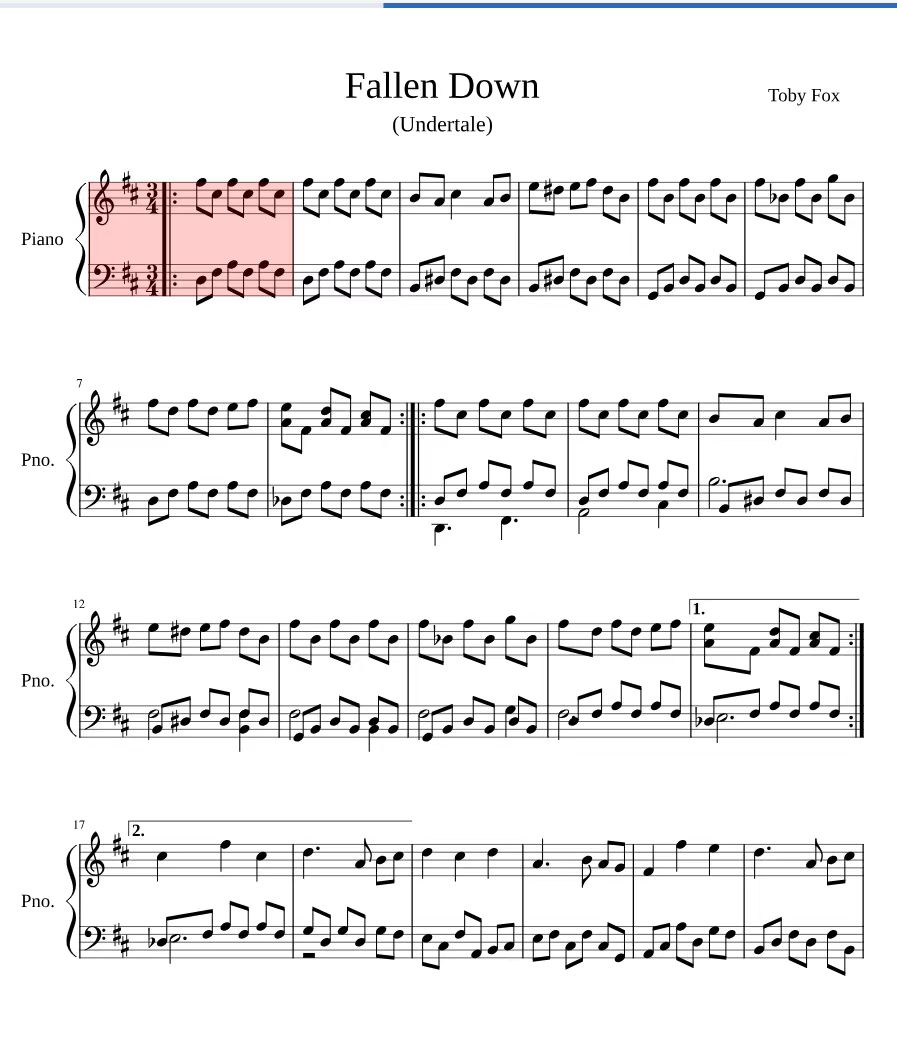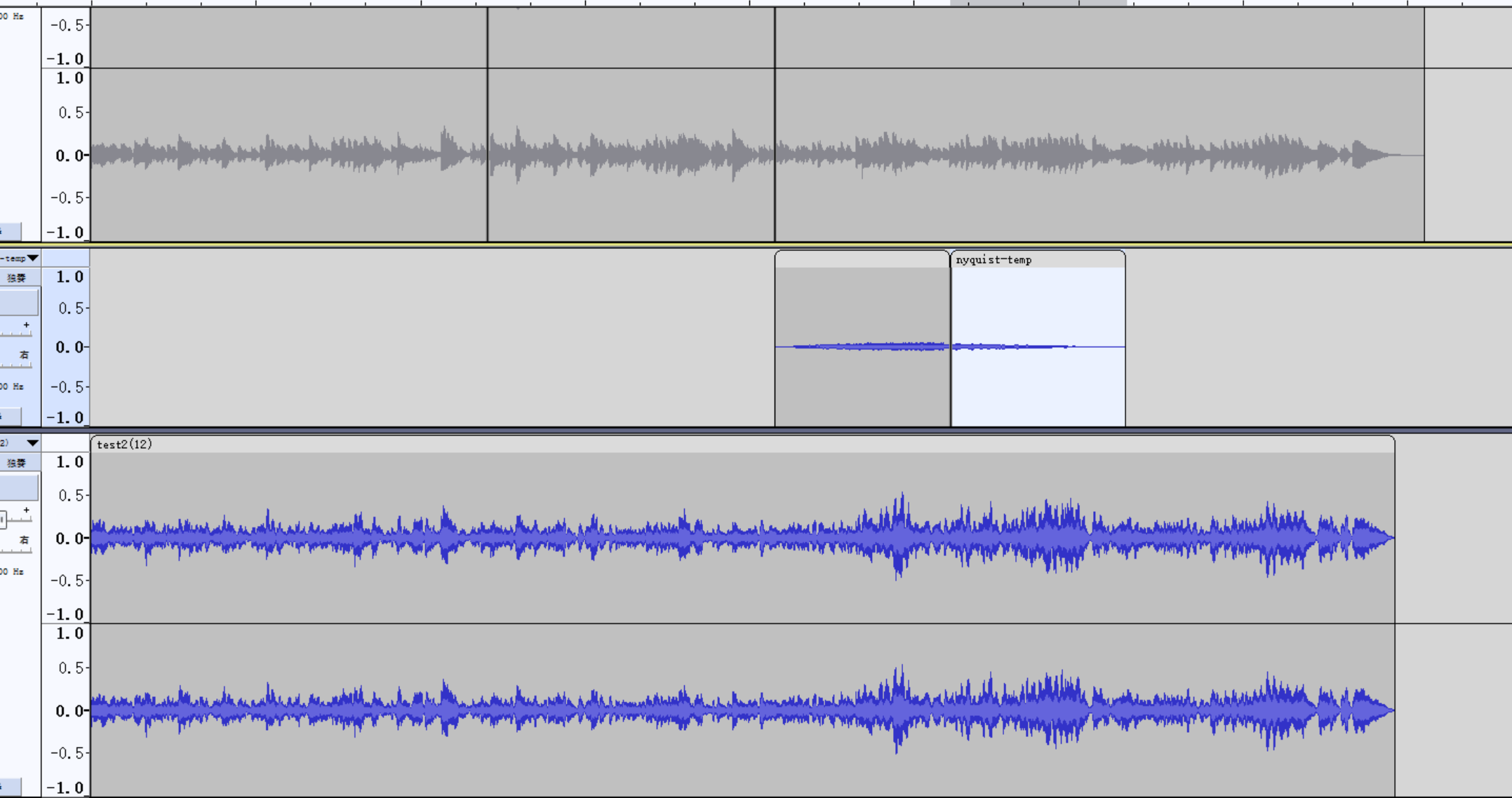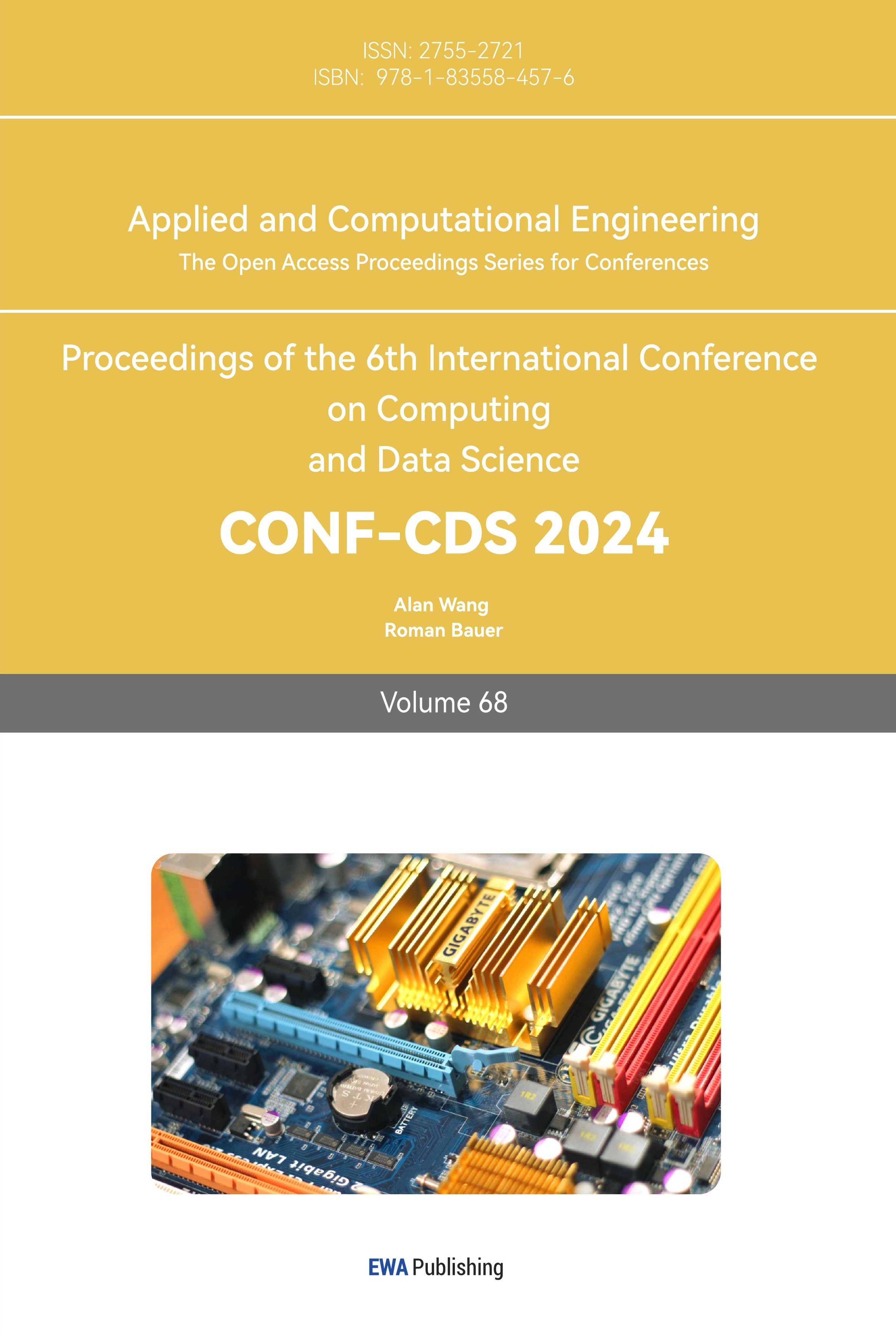1. Introduction
Contemporarily, it’s essential for music composers to incorporate computer music software gradually into their traditional methods. This enables them to create great music with distinctive styles and new ideas. Composers learn to use computer music software and get ideas from outstanding music made by others. They continuously seek new inspirations while making music, and they try to ensure that their music meets their own high standards. They also strive to save more money when making music in the traditional way [1].
Music composers are pioneers in computer utilization, they capitalize on the shared mental processes between programming and music composition. Integrating scientific knowledge and concepts into music composition can enhance musicians’ abilities. Two main reasons support this: Firstly, computers offer a broad range of sound synthesis capabilities. Secondly, programming empowers musicians to manipulate musical structures in an effective way. Moreover, the generality of computer synthesis means an extensive sound palette, letting composers’ imagination be realized, which would create a sound space more abundant than that created by traditional musical instruments. Hence, computer sound synthesis successfully connects imagination and sound that could be heard, music composition by computer also becomes very appealing to music composers [2].
Dreamcore originated from a post on 4chan's paranormal board on April 21, 2018, when an anonymous user shared a set of unsettling images. Another user's comment sparked community interest [3]. Soon, a multitude of internet users began replicating this style, creating similar images with eerie atmospheres or dynamic visual works accompanied by music. This turned internet stories into more artistic visual compositions [4]. Dreamcore and weirdcore use modern tricks like Lo-fi and electronic collage, thus presenting a ‘surreal nostalgia’ in its works. In terms of media expression, dreamcore initially started with making still images at first. However, as the new media platforms came into play, mediums such as music and video also became part of dreamcore. Particularly, the alternative rock and neo-psychedelic music developed in the 1980s complemented dreamcore imagery. This added more depth to dreamcore and allowed it to have more diversifications [4]. Thus, alternative rock and neo-psychedelic music can be regarded as references for producing dreamcore music.
Because dreamcore music is a relatively new musical style, and dreamcore is first an art style but not a musical style, only a few related works and research about how to compose this music have been done by others [5, 6]. It’s indeed that there are many musicians who have tried to synthesize this style of music, but since there’s no official method of composing dreamcore music, they mostly create this music or provide the method of creating it according to their own music theory knowledge, experience, and their mastery and skillful use towards music composing software. The study will create a piece of dreamcore music of about two minutes by Nyquist, driven by her longstanding fascination with this genre. The final piece of music should sound dreamy, be kind of unstable, and be close to the feeling given by other dreamcore music. To guide the composition process, she selected two typical pieces of music (Fallen down & Six Forty Seven) as samples to learn from and imitate after listening to a large amount of dreamcore music. By summarizing and imitating their music styles and characteristics, the author tried to write her own score by referring to certain principles of dreamcore music, coded the score in Nyquist, and added musical effects such as reverb and ghost screams to create a piece of dreamcore music.
2. Methodology
Based on the summary, synthesizing dreamcore music requires the use of reverb effects, appropriate instruments and rhythm. Composers should also pay attention to the characteristics of dreamcore music such as low fidelity, high pitch, and instability. Nyquist stands as a language designed for music composition and sound synthesis, operating within an interactive environment based on Lisp. Nyquist doesn’t separate the main structure of the music from its detailed instructions, so there’s no conventional boundaries between the “score” and the “orchestra”. This helps save time and space. The main goal of Nyquist is to be a flexible language that can handle various tasks, from composing music to altering sounds. Nyquist has a significant advantage, it has the ability to perform both simple sound changes and more complex musical tasks, all within a single program [7-10].
3. Results and discussion
3.1. Main score
This study first tried to create her own score with the help of the piano, according to the research related to dreamcore music composing that she had done. When each single note/part of the notes in a chord rise or fall a step, the feeling of dreamcore and weirdcore could be brought to the listeners [3]. In the score, for example, the author used the chord “A2 CS3 E3” which was followed by the chord “B2 D3 FS3”, “B2 D3 FS3” was “A2 CS3 E3” with all three notes raised by one step. When all notes in chord “A2 CS3 E3” fell one step, the chord “G2 B2 D3” appeared, this chord was also used in the score. Besides, the upward and downward movements of chords could bring emotional catharsis and convergence. This release of different emotions could also make contributions to the instability and immersion of this dreamcore music. Take an example by these three chords again: When “A2 CS3 E3” changed to “B2 D3 FS3”, it was an emotional catharsis; when “B2 D3 FS3” changed to “G2 B2 D3”, it was an emotional convergence. The stable pitches are C, E, G. And the unstable pitches are F, B, D, A (arranged in descending order of stability/instability). Dreamcore music has the characteristic of “instability”, so the author tried to use more unstable pitch in the main score; more sharp and flat semitones were also used in the score to accentuate the instability. Through studying the sample songs (Fallen Down & Six Forty Seven), it is found that many parts of the score use repetition, which can better create the feeling of emotional impact, immersion and resonance brought by the dreamcore music, as shown in Fig. 1. So, this study added several repetitions in the score, such as repeating a chord or a single note with the right hand several times, or playing two right hand notes several times. The melody referred to the three methods above. Combined with the author’s personal interest and experience in playing the piano, after several times of attempts, the main score of the music was finally completed.

Figure 1. Picture of the Screenshot of the sample music (Photo/Picture credit: Original).
3.2. The production of the Score
Based on the obtained score, the author implemented it in Nyquist through iterative modifications. The author opted to manually write the code line by line due to the handwritten nature of the melody and frequent rhythm changes. By translating the musical notation and rhythm markings into suitable pitch and duration values, the author meticulously debugged the code until achieving a result akin to piano music. The score was divided into left and right hands, with the left-hand predominantly comprising chords and the right-hand featuring mostly single notes. The leftscores and rightscores were set to have their own beginning time, duration, pitch combination, and velocity according to the main score. The beginning time and duration of each chord or note depended on the rhythm of the score, the velocity was adjusted to a proper value, almost remaining the same throughout the code. For better repetition, the entire song was divided into three sections: score1, score2, and score3. Each was a combination of left hand and right hand using the score-merge function:
\( set score1=score-merge(leftscore1, rightscore1) \) (1)
\( set score2=score-merge(leftscore2, rightscore2) \) (2)
\( set score3=score-merge(leftscore3, rightscore3) \) (3)
3.3. Rhythm
Referring to the sample music selected -- Six Forty Seven, it was found that a percussion-like sound as a rhythmic accompaniment could be added, so the author chose to call the function in b8 in the file pmorales to produce a bell-like sound. Score-gen was used to make the sound repeat. The author wanted it to be generated once every two seconds, but the first time it was generated at the same time as the leftscore’s chord, the sound was louder and more obvious, and the latter time was weaker, so the drum-score was copied and its ioi (input-output instructions) was adjusted so that they could overlap to produce different effects. At the same time, in order to make it more rhythmic and neat, the duration was adjusted to 0.25. The melody and drum were then merged via score-append. This research chose a method of starting at a slower speed and gradually accelerating. After score1 played, she could speed it up and repeat it, and at the same time changed the instrument through score-voice to sine-bell. Score1 was divided and selected through score-select, and each part modified it speed, resulting in the effect of gradually getting faster, and then gradually slowing down back to the original speed. The parts were composed as said above through score-stretch and combined together through score-merge. A distinctive feature of the music Six Forty Seven was the *frequency* vibrato that was slow and made the music sound a bit out of tune. The author used the method timed-seq in function flat-sound in order to convert the score to a time series. Then, the author used sound-warp to successfully completed the process of frequency shifting to the music completed earlier, so that the music could have this kind of effect. The vibrato frequency was 1.5 and the amplitude (depth) was 0.001. Reverb was a crucial music effect to be added to create the feeling of dreamcore music, so the author generated reverb and stereo chorus for the music. The dry signal and reverberated signal were mixed. The score was rendered to a file and the peak value was printed. The score was then rendered and the sound file was played. Because the author wanted to produce a psychedelic effect, she tried to increase the depth of the reverb to reach this purpose, and the depth was controlled to 0.3. Only two musical instruments were included in the initial selection at first, so it was relatively empty and monotonous. Then, more instruments were added, and they were all used by calling orchestrar.lsp. More j1-note and flutey-tingy were used in the first part. In the repeated parts, because of the exchange of sine-bell and ting-tone, using these two instruments could preserve them and give the repeated passages more variety. In score3 merged chorus, ting-pluck was used. String instruments were added to make it fuller.
Referring to Fallen Down, this study aimed to add a music effect that sounds like a ghost scream to create a paranormal sensation of dreamcore music. The author made the glides between pitches using voice.sal., which contained some simple vowel sound models. By adjusting the pitch parameters, a proper sound synthesis appeared. The music was imported into Audacity, as shown in Fig. 2, some music effects were added and merged with the finished music. The final piece of music was completed.

Figure 2. Picture of the piece of music in Audacity (Photo/Picture credit: Original).
4. Limitations and prospects
Because of the lack of music theory knowledge, the features of the original score that the author wrote was not so obviously close to the style of dreamcore music. This study just integrated some elements that could create the effect of instability, immersion, and emotional impact. With the continuous consolidation of music theory knowledge and composition practice, it is believed one can do better in this aspect in the future. In addition, because the music of the dreamcore genre contains very different types of emotions, and because of the limited ability, the author did not assign a specific emotion to it when this music was made, but it would probably be more interesting if it was added, and it is a way to continue to improve in the future research direction. Finally, besides the music effects such as reverb and ghost scream, there’s more functions and files that the author could import to make the piece of music have more characteristics of dreamcore music, and become richer in its performance. Overall, creating a piece of music with a certain style by using computer music software is an ongoing exploration with opportunities for deeper study and improvements. Focusing and trying to optimize various aspects of the composition process can definitely make significant progress in music composition.
5. Conclusion
To sum up, this study shows the process and methods of composing a piece of dreamcore music by Nyquist. In this study, the main goal was to imitate and create. It is thought the requirements that the final work sounds dreamy and has the characteristics of dreamcore music have been met. Due to lack of knowledge and experience, the author spent most of the time researching and learning music composing methods. Using a computer to make music was a novel experience, it’s a worth-trying challenge and it really made improvements to the author’s music and computer skills. Dreamcore music is an attracting and interesting musical style. It’s waiting for more musicians to work on with and make explorations. It is hoped that this study can give readers who intend to compose computer music more understanding and inspirations in music composition.
References
[1]. Liang L and Liu J 2021 An exploration of the application of computer music production software in music composition. IEEE Asia-Pacific Conference on Image Processing, Electronics and Computers (IPEC) pp 794-796.
[2]. Curtis Roads 1996 The Computer Music Tutorial. Foreword: New Music and Science.
[3]. Wu H 2022 Lost items and exposed shame—dreamcore’s inheritance and transcendence of liminal space and defamiliarization. Journal for Cultural Research vol 26(2): 153-165.
[4]. Zhang J R 2023 Artistic Expression and Aesthetic Psychology of Dream Core from the Perspective of Psychoanalysis. Popular Literature and Art vol 18 pp 223-225.
[5]. Huang X 2020 The Musical Style and the Cultural Connotation of Bright Sheng’s Opera Dream of the Red Chamber (Doctoral dissertation, University of Nevada, Las Vegas).
[6]. Graham M 2020 Platform socialism. twentyforty–Utopias for a Digital Society.
[7]. Dannenberg R B 1997 Machine Tongues XIX: Nyquist, a Language for Composition and Sound Synthesis. Computer Music Journal vol 21(3) pp 50-60.
[8]. Simoni M and Dannenberg R B 2013 Algorithmic Composition: A Guide to Composing Music with Nyquist. University of Michigan Press.
[9]. Huang Y, Jia Z, Lin C and Shi Y 2023 Composing Real Time Adapting Weather Music based on Nyquist. Highlights in Science, Engineering and Technology vol 39 pp 280-285.
[10]. Li W, Ma Z and Zou Z 2024 Synthetic Music Random Generation Based on Nyquist. Highlights in Science, Engineering and Technology vol 85 pp 591-596.
Cite this article
Yang,K. (2024). Analysis of dreamcore music composing based on Nyquist. Applied and Computational Engineering,68,123-127.
Data availability
The datasets used and/or analyzed during the current study will be available from the authors upon reasonable request.
Disclaimer/Publisher's Note
The statements, opinions and data contained in all publications are solely those of the individual author(s) and contributor(s) and not of EWA Publishing and/or the editor(s). EWA Publishing and/or the editor(s) disclaim responsibility for any injury to people or property resulting from any ideas, methods, instructions or products referred to in the content.
About volume
Volume title: Proceedings of the 6th International Conference on Computing and Data Science
© 2024 by the author(s). Licensee EWA Publishing, Oxford, UK. This article is an open access article distributed under the terms and
conditions of the Creative Commons Attribution (CC BY) license. Authors who
publish this series agree to the following terms:
1. Authors retain copyright and grant the series right of first publication with the work simultaneously licensed under a Creative Commons
Attribution License that allows others to share the work with an acknowledgment of the work's authorship and initial publication in this
series.
2. Authors are able to enter into separate, additional contractual arrangements for the non-exclusive distribution of the series's published
version of the work (e.g., post it to an institutional repository or publish it in a book), with an acknowledgment of its initial
publication in this series.
3. Authors are permitted and encouraged to post their work online (e.g., in institutional repositories or on their website) prior to and
during the submission process, as it can lead to productive exchanges, as well as earlier and greater citation of published work (See
Open access policy for details).
References
[1]. Liang L and Liu J 2021 An exploration of the application of computer music production software in music composition. IEEE Asia-Pacific Conference on Image Processing, Electronics and Computers (IPEC) pp 794-796.
[2]. Curtis Roads 1996 The Computer Music Tutorial. Foreword: New Music and Science.
[3]. Wu H 2022 Lost items and exposed shame—dreamcore’s inheritance and transcendence of liminal space and defamiliarization. Journal for Cultural Research vol 26(2): 153-165.
[4]. Zhang J R 2023 Artistic Expression and Aesthetic Psychology of Dream Core from the Perspective of Psychoanalysis. Popular Literature and Art vol 18 pp 223-225.
[5]. Huang X 2020 The Musical Style and the Cultural Connotation of Bright Sheng’s Opera Dream of the Red Chamber (Doctoral dissertation, University of Nevada, Las Vegas).
[6]. Graham M 2020 Platform socialism. twentyforty–Utopias for a Digital Society.
[7]. Dannenberg R B 1997 Machine Tongues XIX: Nyquist, a Language for Composition and Sound Synthesis. Computer Music Journal vol 21(3) pp 50-60.
[8]. Simoni M and Dannenberg R B 2013 Algorithmic Composition: A Guide to Composing Music with Nyquist. University of Michigan Press.
[9]. Huang Y, Jia Z, Lin C and Shi Y 2023 Composing Real Time Adapting Weather Music based on Nyquist. Highlights in Science, Engineering and Technology vol 39 pp 280-285.
[10]. Li W, Ma Z and Zou Z 2024 Synthetic Music Random Generation Based on Nyquist. Highlights in Science, Engineering and Technology vol 85 pp 591-596.









